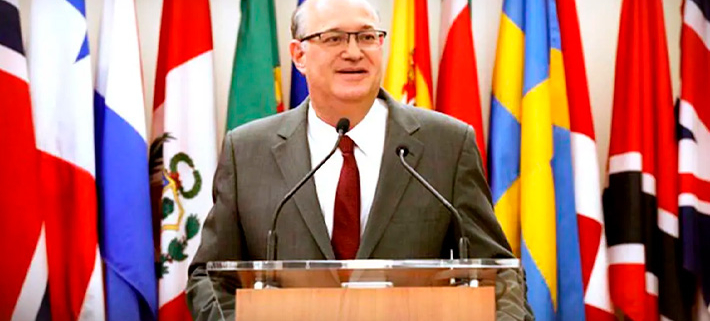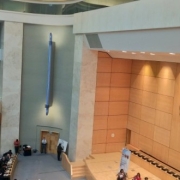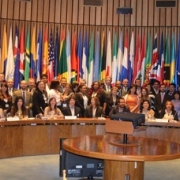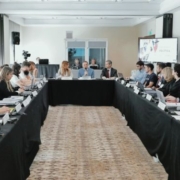The Brazilian Ilan Goldfajn is the new president of the IDB
On November 20, the Board of Governors of the Inter-American Development Bank (IDB) appointed Brazilian candidate Ilan Goldfajn, former president of the Central Bank of Brazil and current director for the Western Hemisphere of the IMF, as its new president. After withdrawing the candidacy of Cecilia Todesca, the government of Alberto Fernández supported the candidate promoted by Brazil.
“Below, we offer a google translate version of the original article in Spanish. This translation may not be accurate but serves as a general presentation of the article. For more accurate information, please switch to the Spanish version of the website. In addition, feel free to directly contact in English the person mentioned at the bottom of this article with regards to this topic”.
On September 26, following the recommendations of the Board of Executive Directors, the Board of Governors of the IDB announced the termination of the executive functions of Mauricio Claver-Carone. After the announcement, and through an official statement, the selection process of the person in charge of the next presidency of the institution began.
The Board of Governors, the IDB’s highest authority, is made up of representatives of the 48 member countries, whose voting power varies according to the capital that the country subscribes to the institution. According to the organization’s press release, “to be elected, the candidate must obtain a majority of the voting power of the IDB member countries, as well as the support of at least 15 of the 28 regional member countries.”
In this way, the candidate must consecrate himself with the majority of the voting power of the member countries to be elected. Voting power fluctuates according to the number of shares owned by each state. The largest investor is the United States, which with 30% of the total funds has a key role in the election. They are followed by Argentina and Brazil, with 11.3% each. Mexico accounts for almost 7.3%, Japan 5%, Canada 4%, Venezuela 3.4% and Chile and Colombia 3.1%. The rest is divided into small percentages from different countries.
The new president of the Bank will assume his functions for a period of five years with the possibility of being re-elected only once, and will be responsible for managing the daily affairs of the Bank, as well as managing its operations together with the Presidential Office. The president also formulates proposals on the Bank’s general policy and presides over the meetings of the Board of Directors, being able to vote only in case of a tie.
The alliances behind the election
The new president-elect was consecrated with 80.8% of the votes, and was proposed by the government of Jair Bolsonaro in view of a candidate who would bring consensus to the region after turbulent periods for the Bank, following the dismissal of the former president Mauricio Claver-Carone for violations of the code of ethics. In this way, and thanks to the support of the United States, Canada, and at the last minute from Argentina, Ilan Goldfajn managed to position himself as the new president of the IDB.
It is worth noting the late support of Alberto Fernandez to back the candidacy of the Brazilian; despite his intention to position Cecilia Todesca Bocco as the first woman and the first Argentine to preside over the IDB. However, as a result of the change in its position and the support for Goldfajn, Argentina managed to keep three positions: the Vice Presidency of Sectors, the Infrastructure Management, and a new Institute of Gender and Equality, which will be part of the new management of the IDB.
With annual loans of around 14,000 million dollars, the IDB is the largest source of financing in the region and the change of leadership is essential for the institution to refocus its attention on Latin America after two years of a US presidency.
Prior to the appointment of Goldfajn, from Fundeps and together with a group of civil society organizations in the region, we present an open letter in which we urge those who make up the Board of Governors of the IDB to ensure a transparent selection process and urge the Bank to ensure that the designated person has:
- Knowledge of the region and experience working with its institutions and communities.
- Commitment to human rights, sustainable development and the work of human rights defenders.
- Comprehensive experience and vision on sustainability and environmental protection.
- Commitment and openness to include civil society and communities affected by the projects.
- That it prioritize the discussion for the development of a framework for reparation to the affected communities.
- Lead by example and act in accordance with the highest ethical standards.
- Commitment to regional and international agreements and treaties that address climate change, the protection of biodiversity, the defense of human rights and sustainable development.
It remains to be seen if Goldfajn, in the course of his tenure, manages to live up to and meet at least part of these requirements. In any case, we believe that a historic opportunity has been wasted to finally position a woman in the presidency of the Bank, a pending account of this type of multilateral institutions. Beyond the progress made by the IDB in generating job opportunities for women and their number in management positions, it is estimated that 3 out of 14 seats on the executive boards are occupied by women; in the alternate executive directorates, out of 12 chairs, only one is occupied by a woman. What gives rise to the claim to this type of organizations to promote specific spaces for participation for women and dissidence in the most hierarchical positions, which allow breaking the glass ceiling.
More information:
- Declaración sobre la presidencia del Banco Interamericano de Desarrollo – BID
- Ilan Goldfajn fue elegido nuevo presidente del BID con el apoyo de la Argentina, que retiró la candidatura de Cecilia Todesca – La Nación
- Open letter to the IDB for the election of a new presidency – Fundeps
- IDB: the president was dismissed and the possibility opens for a Latin American woman – Fundeps
- ¿Dónde están las mujeres en las Instituciones Financieras Internacionales? – El Entramado
Authors:
Candela Jauregui
Clara Labat
Contact:
Gonzalo Roza, gon.roza@fundeps.org








